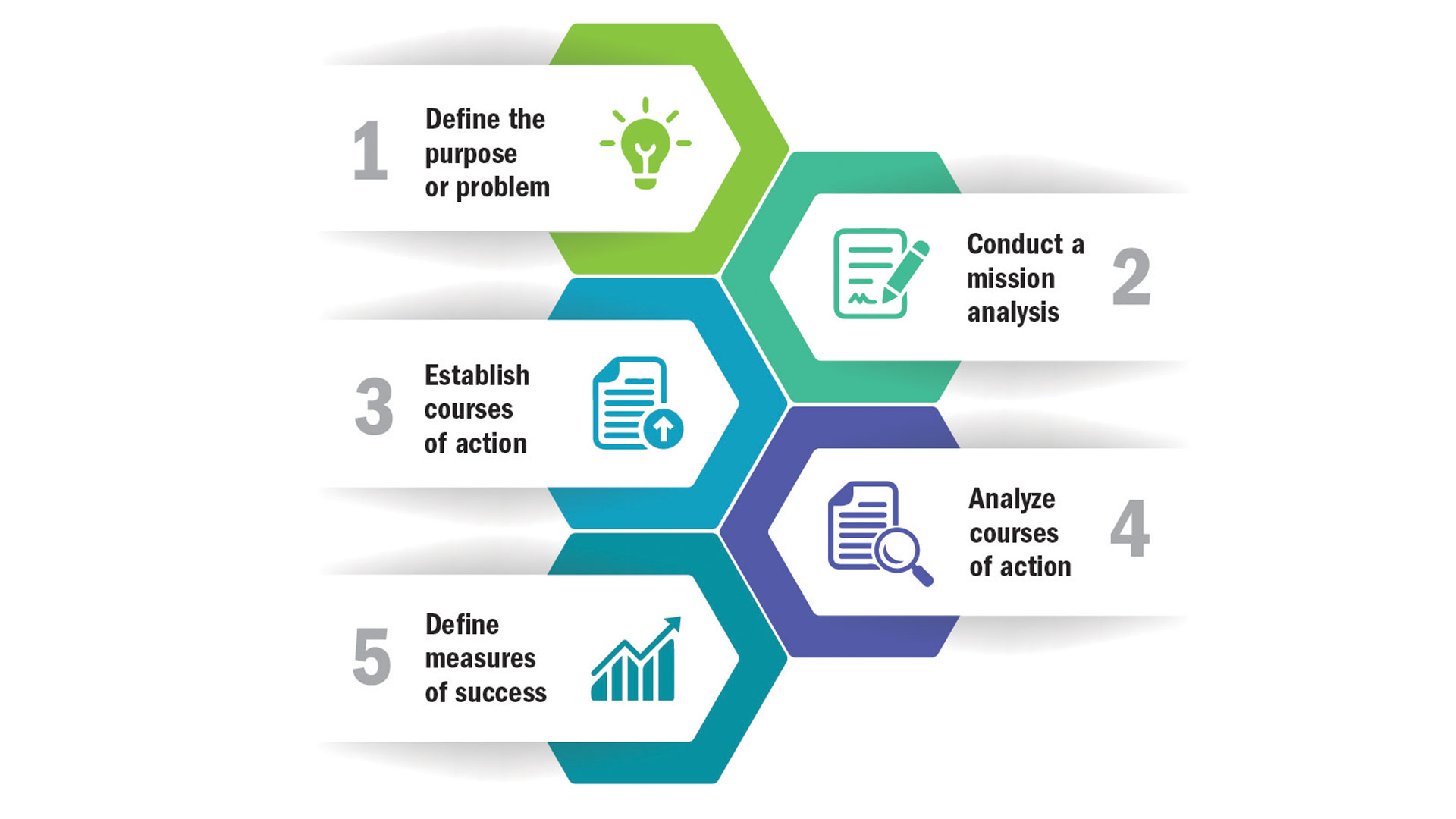
The MDMP: A proven approach for getting a “yes” on your next proposal to management
By Greg Brewer, Meghan Dodge and Ron Frailer
In today’s business environment, companies look for anything that can offer a competitive advantage. For example, many organizations use off-site professional development events to build teamwork and esprit de corps. However, when planning these events, especially ones involving the commitment of significant organizational resources, managers must first request and gain the approval and support of senior leadership. A successful request can reap many benefits for the workforce and the organization; a rejected request, however, can create tension and damage morale.
One such request was recently made by a manager in a military organization who sought approval for a planned overnight off-site event for the personnel in his unit. The manager and his team spent considerable time and effort planning the event and preparing the proposal for senior leadership approval. Although the request was quickly approved by midlevel management, it was ultimately rejected by senior leadership because they were not willing to support an overnight stay and were not comfortable with the title of the event. Not surprisingly, rejection of the plan created tension between the manager and senior leaders, damaging the morale of the manager, the team that helped generate the request and the personnel in the unit who were already aware of the off-site plans. So much for gaining a competitive advantage or building esprit de corps.
So how can managers avoid such outcomes? The simple fact is that even great ideas sometimes fail, not based on the merit of the idea but because of the way the idea is presented to leadership. Proposals must be presented in a well-organized and clear manner that provides decision-makers with critical information, enabling them to make informed decisions and ultimately resulting in a higher approval rate.
One well-established and proven method for organizing and presenting ideas to decision-makers is the U.S. Army Military Decision-Making Process (MDMP). Using the MDMP as a road map for these proposal presentations can help ensure that structured thinking is applied to the planning, execution and evaluation processes; can help convey the value in the proposal; and can help ensure that leaders are provided with the information they need to make informed decisions.
As defined in the MDMP, the proposal should address the following five key areas, or phases:
- Define the purpose or problem.
- Conduct a mission analysis.
- Establish courses of action.
- Analyze courses of action.
- Define measures of success.
Note that each phase of the MDMP has a unique purpose that builds on the previous phase and establishes a foundation for the following phase.
The first step is to articulate the problem or issue that one is trying to resolve or improve. A well-defined problem statement provides a solid foundation for all remaining phases of the MDMP. The problem statement should be justifiable and clear.
The next step is to conduct a mission analysis. Although this term is often not thought of outside of a military context, it is applicable in any proposal process. The mission analysis identifies the solution space and defines the current capability, the desired capability and the capability gap. In so doing, the mission analysis sets the parameters for developing courses of action.
Courses of action are then developed to provide a path forward to address the capability gap defined in the mission analysis. These courses should be suitable solutions that are acceptable, feasible and easily distinguishable from each other. Good courses of action provide answers to the basic questions of who, what, when, where, why and how for each solution.
Analysis of each course of action provides an honest assessment of the suggested solution. Some questions the course of action analysis should address are:
- Is the course of action feasible within the decision space of the leader from whom you are seeking approval?
- What are the pros and cons of each course of action?
- Can the course of action be reasonably accomplished?
Ultimately, the most important question the course of action analysis should address is:
- Does the course of action address the capability gap?
A recommendation should then be offered regarding which course of action should be implemented based on the analysis.
Enactment of a selected course of action is not the end of a process; it is a path to a desired outcome. The final step of the MDMP process is to define how one will measure the success of the implemented course of action. One must define for leadership how he or she will measure the success of the selected course of action and determine if it narrows or closes the capability gap.
When applying the MDMP process, it is also important to remember that even the best possible proposal does not guarantee acceptance if the presentation is not communicated properly with management. Information should always be presented clearly, concisely and directly. In addition, presenters should maintain an even and professional tone and try to keep emotion out of the discussion. Presenters should also be active listeners, paying attention to feedback received and taking notes to document the conversation. Finally, regardless of the outcome of the presentation, presenters should not take it personally if their proposal is modified or refused.
In the end, when presenting a proposal to management, it is important to set up oneself for success. And the MDMP is a proven process that can help managers and others secure that much-sought-after “yes” on their next proposal presentations.
This article is published in the October 2018 DACM Newsletter.
Subscribe to Army AL&T News – the premier online news source for the Army Acquisition Workforce.
![]() Subscribe
Subscribe







